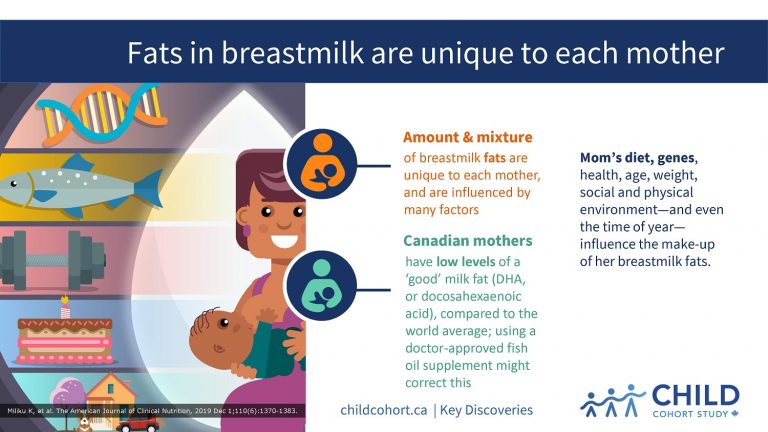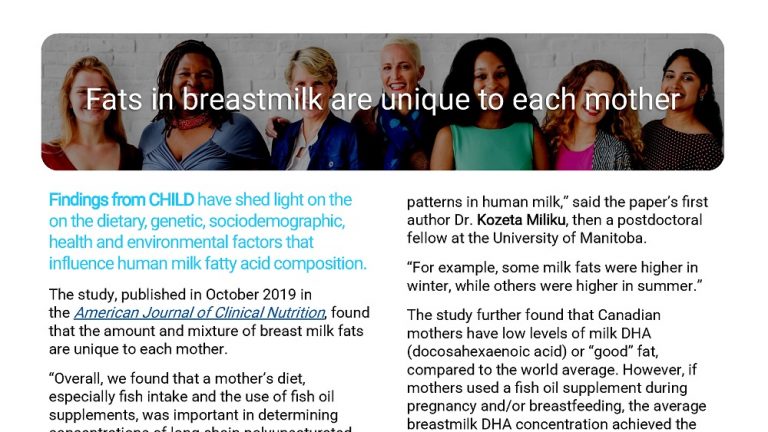Fats in breastmilk are unique to each mother
Findings from CHILD have shed light on the on the dietary, genetic, sociodemographic, health and environmental factors that influence human milk fatty acid composition.
The study, published in October 2019 in the American Journal of Clinical Nutrition, found that the amount and mixture of breast milk fats are unique to each mother.
“Overall, we found that a mother’s diet, especially fish intake and the use of fish oil supplements, was important in determining concentrations of long-chain polyunsaturated omega-3 milk fatty acids, while a mother’s genes mainly determined the concentrations of omega-6 milk fatty acids,” said Dr. Meghan Azad, the University of Manitoba investigator who led the study.
In addition to a mother’s diet and genetics, the researchers also examined the impact of sociodemographic and environmental factors such as birth mode, gestational age, maternal pre-pregnancy weight and other factors on fatty acid concentrations.
SEASONS, MOM’S BMI AFFECT FATTY ACID LEVELS
“We found that a mother’s body mass index (BMI) before pregnancy, and even the time of year, were associated with fatty acid levels and patterns in human milk,” said the paper’s first author Dr. Kozeta Miliku, then a postdoctoral fellow at the University of Manitoba.
“For example, some milk fats were higher in winter, while others were higher in summer.”
The study further found that Canadian mothers have low levels of milk DHA (docosahexaenoic acid) or “good” fat, compared to the world average. However, if mothers used a fish oil supplement during pregnancy and/or breastfeeding, the average breastmilk DHA concentration achieved the minimum level required, according to world guidelines.
“DHA is one of the most important omega-3 fatty acids related to infant brain development, and it has been shown to support long-term heart health,” said co-author Dr. Catherine Field, a professor in the Faculty of Agriculture, Life and Environmental Sciences at the University of Alberta.
The researchers used data from more than 1,000 mothers and their infants participating in CHILD.
FIRST STUDY OF ITS KIND
“To our knowledge, this study is the first to assess such a wide variety of factors that influence the concentrations of DHA and other fatty acids in human milk, highlighting the incredible variation that makes human milk so unique,” said Dr. Azad.





